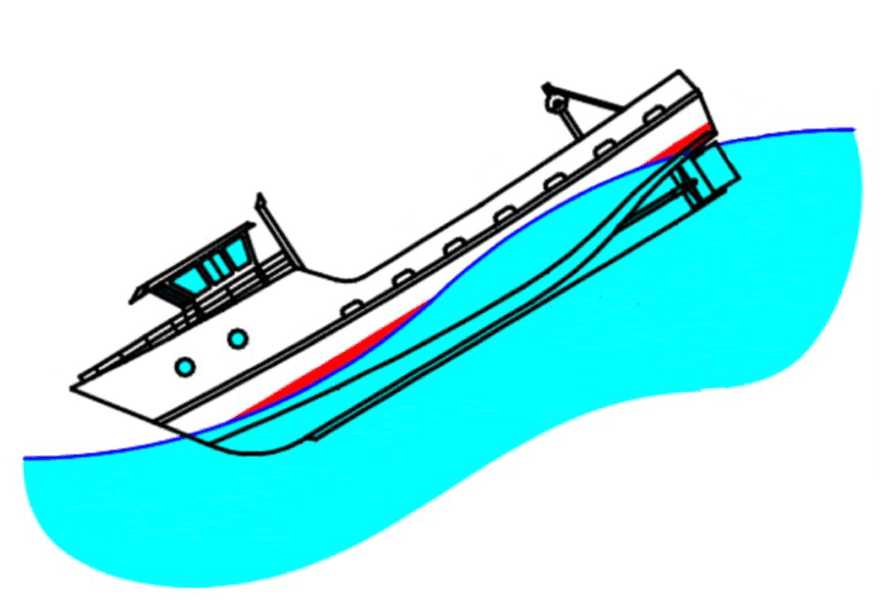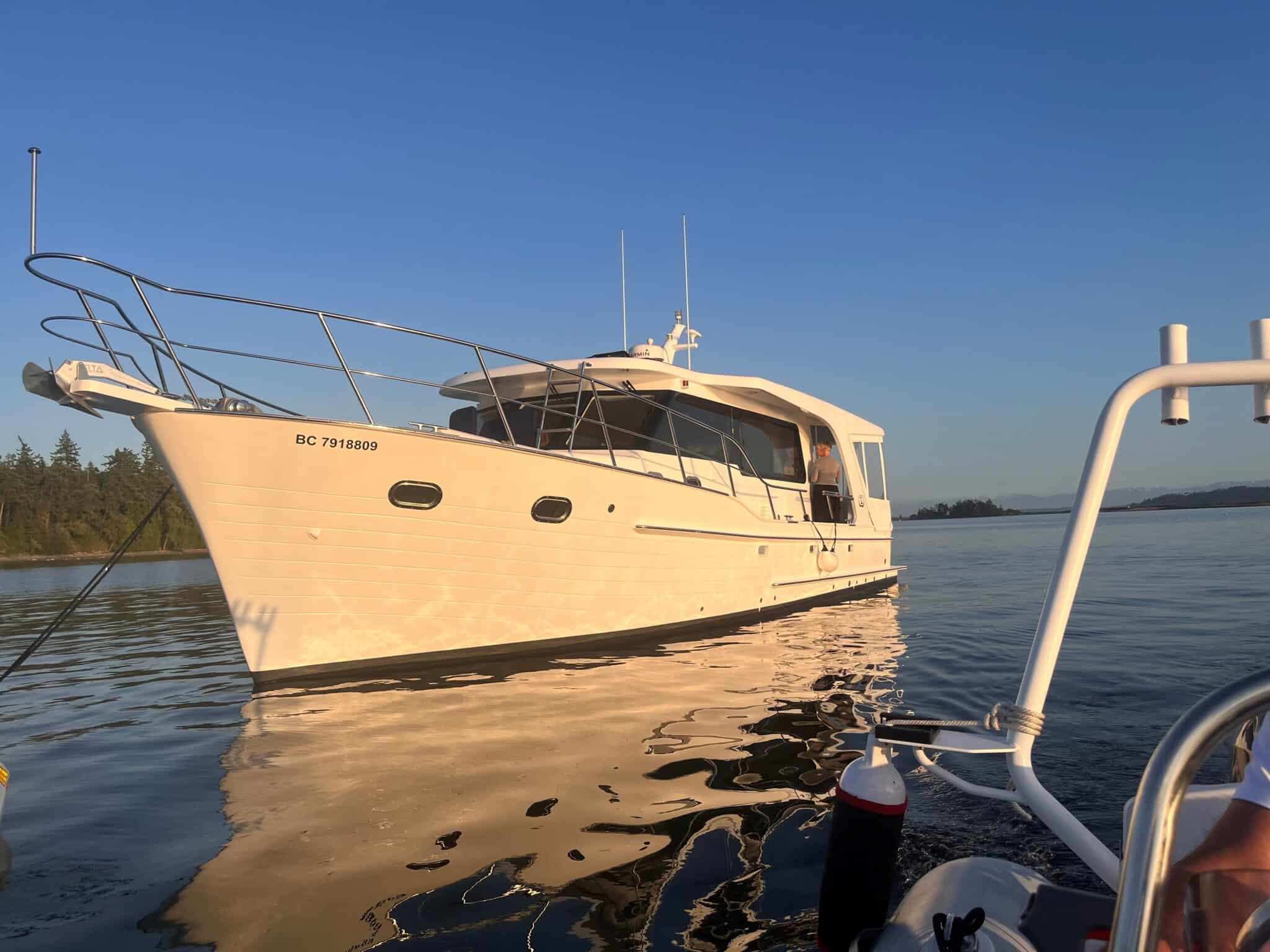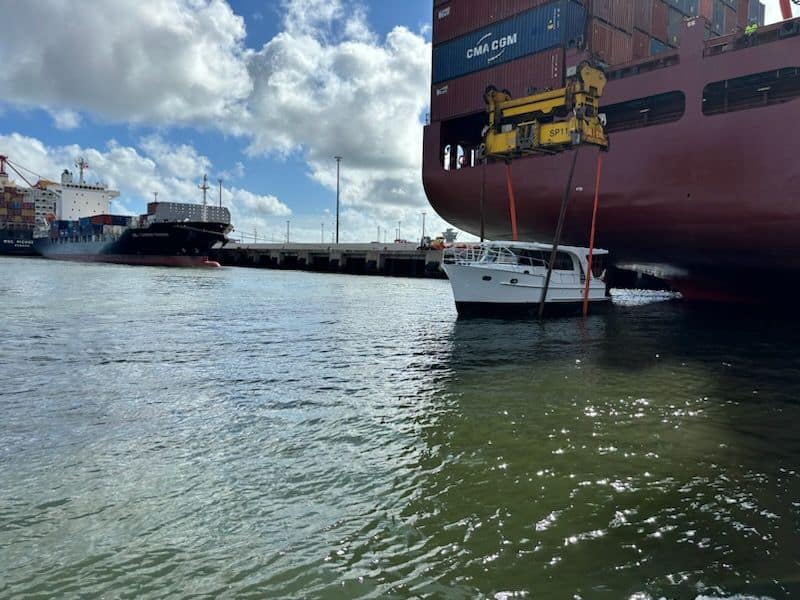It’s never a good spot to be in when the bow stuffs in the water.
One of the worst spots to be in is riding down a wave, losing steering and starting to see the stern swing out. The last thing a boat operator wants is stuck riding down a wave, potentially losing steerage and the stern starts to swing out.
Here are a few tips on how to ride the waves safely back to port.
Running a Boat in Following Seas

Boat operators sometimes have few options but to run in a following sea to get back to port.
Running in following seas isn’t optimal but sometimes you have little choice. Whether it’s going into an inlet or returning from an offshore excursion, exercise additional caution and be aware of these potential hazards:
- If the vessel surfs and accelerates down the wave there is a chance of burying the bow
- Because the natural flow of the water in the wave is in the same direction as the vessel the rudder may lose effectiveness.
- Riding down the face of a steep wave can lead to sudden broaching of the vessel and in the worst-case scenario, capsizing of the vessel.

Boaters should always avoid riding on the crest of a steep wave.
Sitting on top of a steep swell can be a precarious position. The horizon looks a drop on a roller coaster and the boat’s handling feels like a car hydroplaning on the highway. Boaters want to avoid riding over waves because:
- Critical stability provided by the stern is severely reduced when the stern is lifted clear of the water and no longer provides any righting forces.
- Reduction in the vessel’s amidships freeboard further reduces the overall stability levels and may lead to direct capsize of the vessel.
- To prevent this from happening, adjust the boat speed ahead of the next swell or wave to stay between sets. The captain will have to frequently change speeds as swell patterns will vary.

A boat has an increased chance of getting swamped by a wave riding in the trough.
Running in the trough of steep wave creates its own hazards. The captain risks burying the vessel’s bow in the wave’s backside or because of reduced stern freeboard, the boat could potentially see board seas over the stern. Additionally, riding in the trough of a steep wave can increase the chance of being swamped by a boarding wave. Plus, the added weight of the water on deck raises the vessel’s centre of gravity and creates a sizeable free surface capsizing moment.
If necessary to run in a following sea, keep the bow up by adjusting the engine speed. Where the vessel has trim tabs, ensure the trim tabs are in the neutral or up position which eliminates any bow down attitude.
Sometimes running in a head sea simply isn’t an option and the captain has no choice but to run in following seas. The vessel operator should make every endeavour to keep the bow up so it doesn’t stuff into a wave.
In severe sea conditions change course to put the bow into the seas. If the vessel must run with the seas, riding on the backside of the preceding wave minimises the dangers. Do not overload the vessel and keep cargo secured at all times.
Boaters can prepare for those big seas at shore or before departing. Preparations can include:
- Minimising the number of partially filled tanks to decrease free surface effects.
- Keeping all bilges, compartments and spaces dry and free of standing water.
- Maintaining your vessel’s watertight envelope.
- Check the Marine Weather Forecast conditions before you depart and contact the Coast Guard or Marine Rescue on VHF Chanel 16 to get specific local advice on sea conditions before approaching tricky areas.
- Stay at home or safely on your mooring if the Marine Weather Forecast is of concern.
Further Advice on Vessel Handling Techniques
Should any of our vessel owners have any concerns about operating your vessel, please contact us and we will arrange for our Master Skipper to assist you with professional advice.
Source: boattest.com





